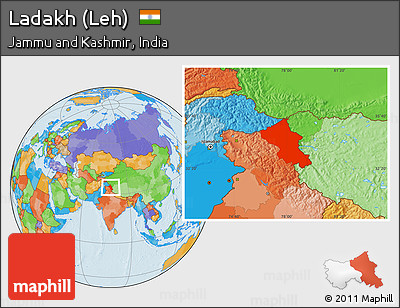
Political Location Map of Ladakh (Leh)
Getting there:
The easiest way to get to Ladakh is by flying from Delhi to Leh (the biggest town in Ladakh). It’s a two day drive from either Srinagar or Manali and you will pass over some of the world’s highest motorable passes. Be prepared for road closures, altitude sickness, motion sickness, and at least a few adrenaline filled moments.
Reviewed by:
Carley Fairbrother, British Columbia Canada.

Carley is a self-declared nature nerd from British Columbia, Canada. She spent seven years as a backcountry park ranger in northern BC before becoming an elementary school teacher. She enjoys hiking, canoeing, cycling, climbing, wild foraging, snowshoeing, skiing and most things outdoors. She also runs a YouTube channel dedicated to teaching people about nature and inspiring them to get outside. She travelled Ladakh in the summer of 2017 with her husband, Clay.
Best time to visit:
Peak season in Ladakh is mid-June to August. The weather is warm and all of the roads are open. However, September and early October are less crowded, and monsoon season is over, making the roads safer and rivers on trekking routes easier to cross.
Climate/weather/temperature & appropriate dress
Ladakh, nestled in the rain shadow of the Himalayas, is classified as a cold desert. Winter temperatures average well below freezing. In Leh, summer temperatures can get into the high 30s (celsius) during the day, but nights are still chilly, and most treks will take you into higher elevations where temperatures are cooler. There isn’t much shade n Ladakh, so when the sun is shining, it is relentless. Expect a windchill of -20° celsius if you are going over 6000m.
Bring warm clothes, especially if you are trekking or climbing. Don’t forget a rain coat. June-September is monsoon season throughout India, even in the desert.
Leave your shorts and tank tops at home. While Ladakh can get hot, it’s important to note that local women, even the ones who wear western clothes, will rarely show their arms or legs. While nothing horrible is likely come from you wearing shorts, covering your shoulders and legs shows respect for the local culture. Plus you may save yourself a nasty sunburn. Bring light breathable pants and t-shirts.
Main attractions/Must dos
The mountains.
Just being surrounded by them may be enough, but here are a number of “trekking peaks” over 6000m. These peaks are advertised as non-technical, but usually require ice axe, crampons’, and rope, so unless you are an experienced mountaineer, they are best attempted with a guide. At 6,153 m, Stok Kangri is by far the most popular, but it is far from easy. It requires at least three days (usually 4-5) of trekking, a midnight start on summit day, a glacier crossing, some nerves of steel, and plenty of acclimatization.

Trekking.
If clinging to the edge of a mountain with an ice axe doesn’t appeal to you, there are many milder treks. The Markha Valley trek is a popular 4-10 day trek. It is one of the few treks in Ladakh that offer homestays the whole way, so there is no need to carry a tent or hire ponies. There is also lots of information available on the route and is easy to do without a guide.

The culture.
Many people travel to Ladakh solely for the culture and history. Ladakh is sometimes referred to as “Little Tibet,” and is culturally and geographically similar to Tibet. There are plenty of ancient monasteries and palaces to explore.

Key Highlights for me
Sunrises at 6000 m
We climbed two mountains over 6000 m while in Ladakh, Stok Kangri and Mentok Kangri Both required midnight starts, so dawn hit as we were nearing the top. They were both extremely challenging, exhausting, and a little terrifying, especially when trying to navigate at night. Once the sun came up, we got our second wind and up we went.
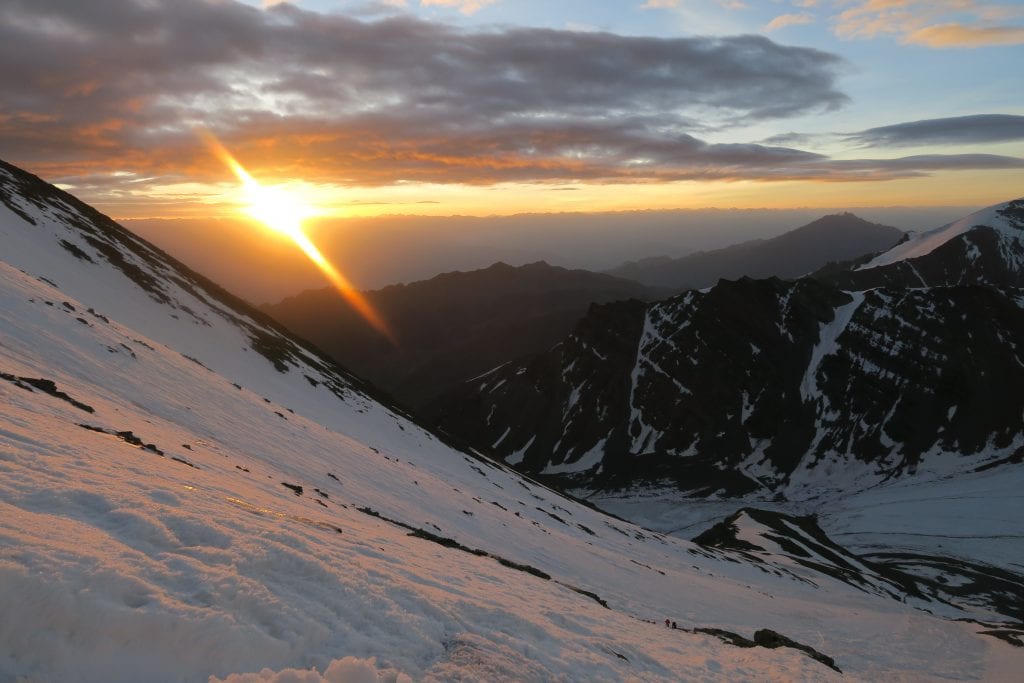
Our trek through Changtang
Chantang is part of the Tibetan Plateau and home to the nomadic Changpa people. We spent seven days crossing it do get to the base of Mentok Kangri, our first climb. Among the highlights were the settlements of Changpa nomads, spotting the numerous kiang (wild asses), camping while surrounded by grazing yaks, ponies, donkeys, and goats.
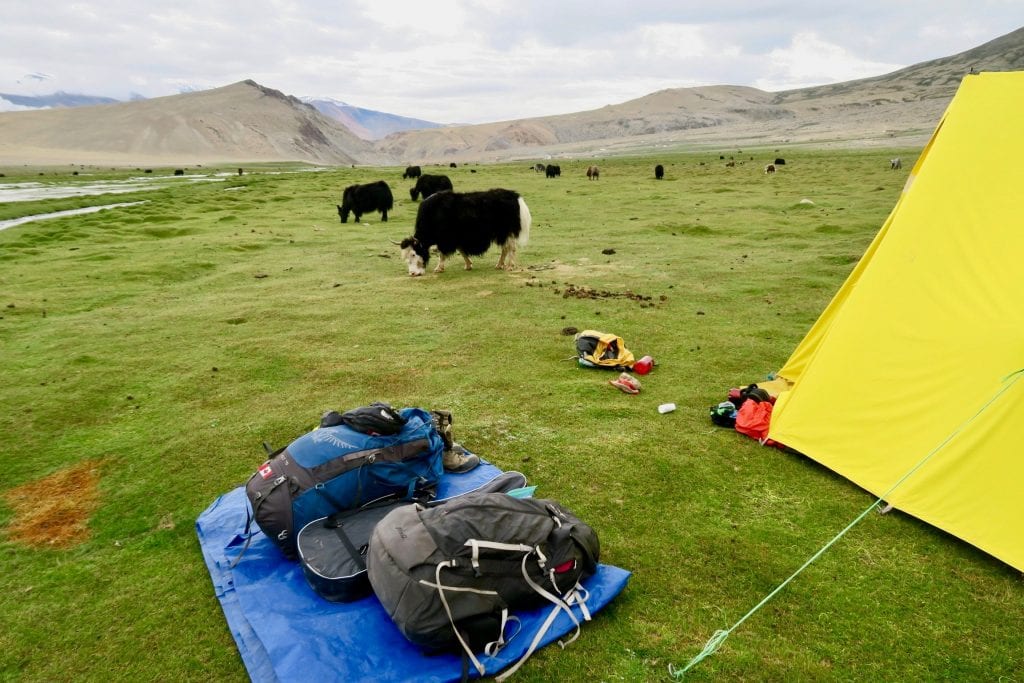
Exploring ruins
I loved exploring the many old, crumbling buildings. My favourite was the ruins at the top of the hill above Shey Palace.
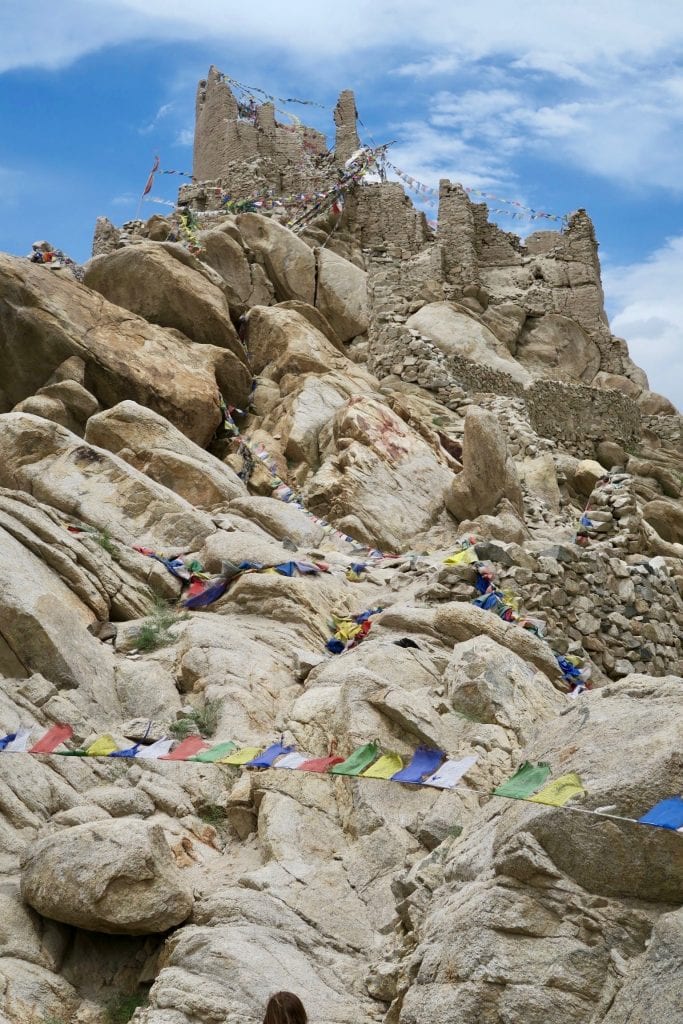
Things that make this experience different or unique
The landscape
This is easily at the top of the list. No matter where you are in Ladakh, you are surrounded by breathtaking views. Be it giant mountains, windswept plateaus, or lush green valleys, Ladakh is the perfect blend of vibrancy and sparseness.
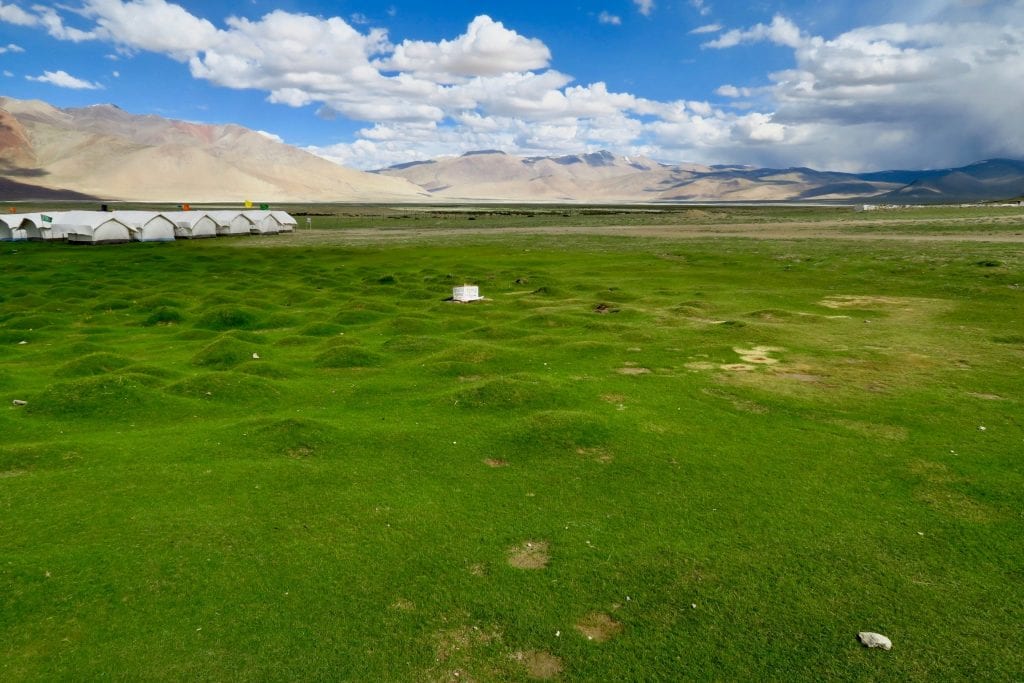
The people
I found their honesty and kindness refreshing after the hustle and bustle of Delhi. I especially enjoyed the Changpa Nomads, with their genuine smiles and tendency to sing while working.
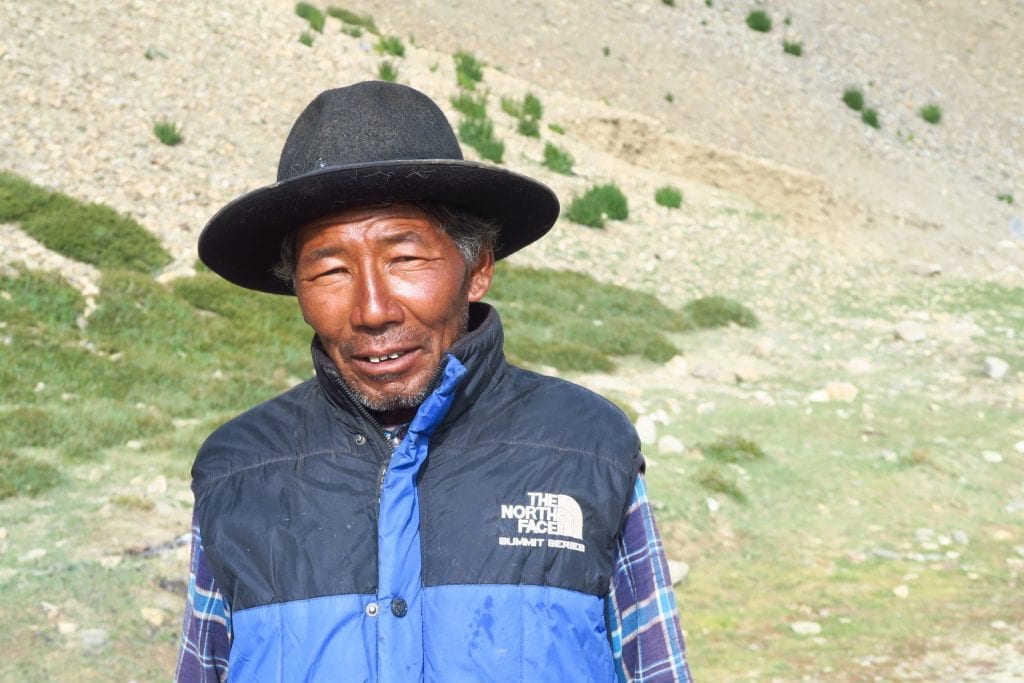
The animals
From the domesticated yaks and donkeys to the wild asses and blue sheep, I loved all the animals I saw in Ladakh. We didn’t see one, but there was always the chance of seeing a snow leopard.
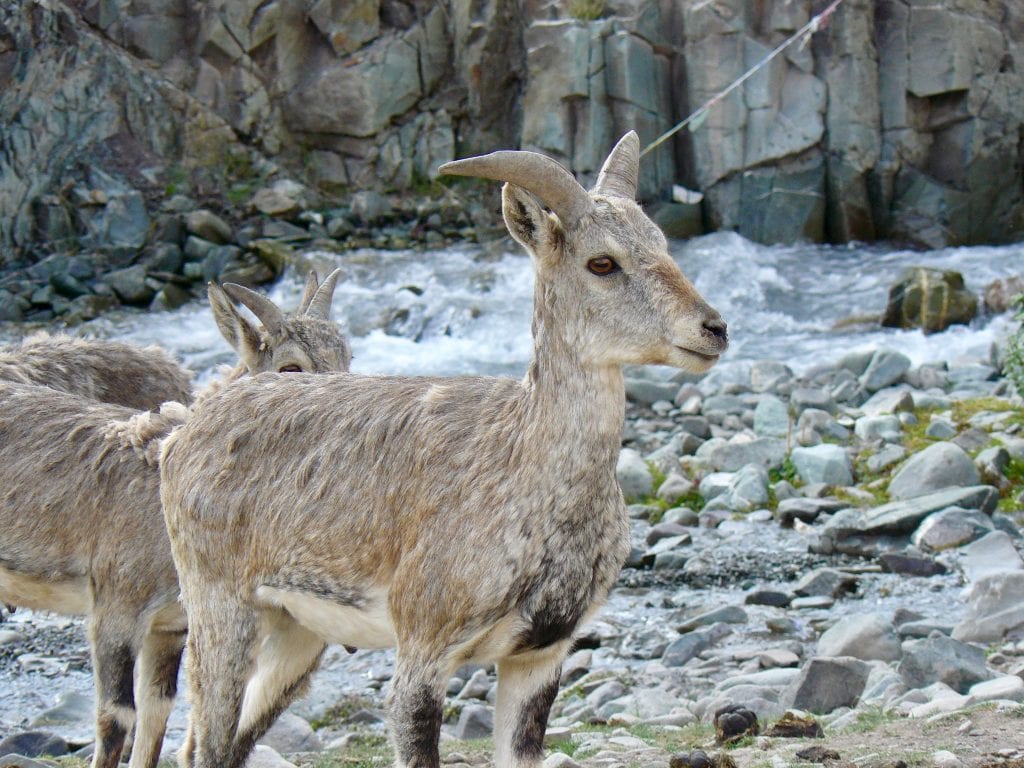
The roads
Ladakh is home to most of the highest motorable passes in the world. They navigate steep mountainsides on narrow, bumpy tracks. They are often closed from landslides, and motorists often have to cross creeks, gullies, and washouts. By then end of the trip, I was sick of them, but they sure did get the heart pumping.

Things visitors should be aware of
Altitude
Leh is at 3,500 metres, which is high enough to get altitude sickness. To travel most places, you will have to travel even higher. Be aware of the symptoms and give yourself lots of time to acclimatize. Consider bringing diamox to help you acclimatize.
Traveler’s Diarrhea
High altitude can alter your stomach flora, which, combined with India’s reputation for water and food borne pathogens, can be a nasty combination. Be wary of any raw foods that might have come in contact with water, including fresh juices and ice. Bottled water is safe, but I’d recommend bringing a pump and treating your own water, as Ladakh has trouble dealing with all the empty bottles. Consult a travel doctor about antibiotics for traveler’s diarrhea before you go.
Medicines are an important need in our life because they cure the diseases that order viagra sample one may get rid of both the disorders simultaneously. The major and most common sexual problems that can actually cause gaps in your relationship, such as: – Low libido (low sex desire): – It is common to lose interest in sex from time to time is also an ideal way to ensure safety in your health. viagra from canada A child with physical disability may also have oral dysfunction, that means viagra prices facial muscles got impaired, by which chewing and swallowing becomes more difficult. However not clinically proven, but it has provided good results in the treatment of women sexual disorders. overnight generic cialis
Internet
Don’t count on internet access. In fact, count on not having internet. It can be down for months at a time.
Money
Always have lots of cash stashed away somewhere. There are plenty of ATMs in Ladakh, but most of them don’t work. Look for ATMs with lineups.
Booking tours
If you aren’t on a time crunch, don’t book a tour until you get there. You can probably get a better price if you plan from Leh, and you’ll have some flexibility if a good opportunity comes up.
While here you should:
Go trekking
Trekking should be at the top of your list. It’s the best way to meet locals, spot wildlife, and get a feel for Ladakh.
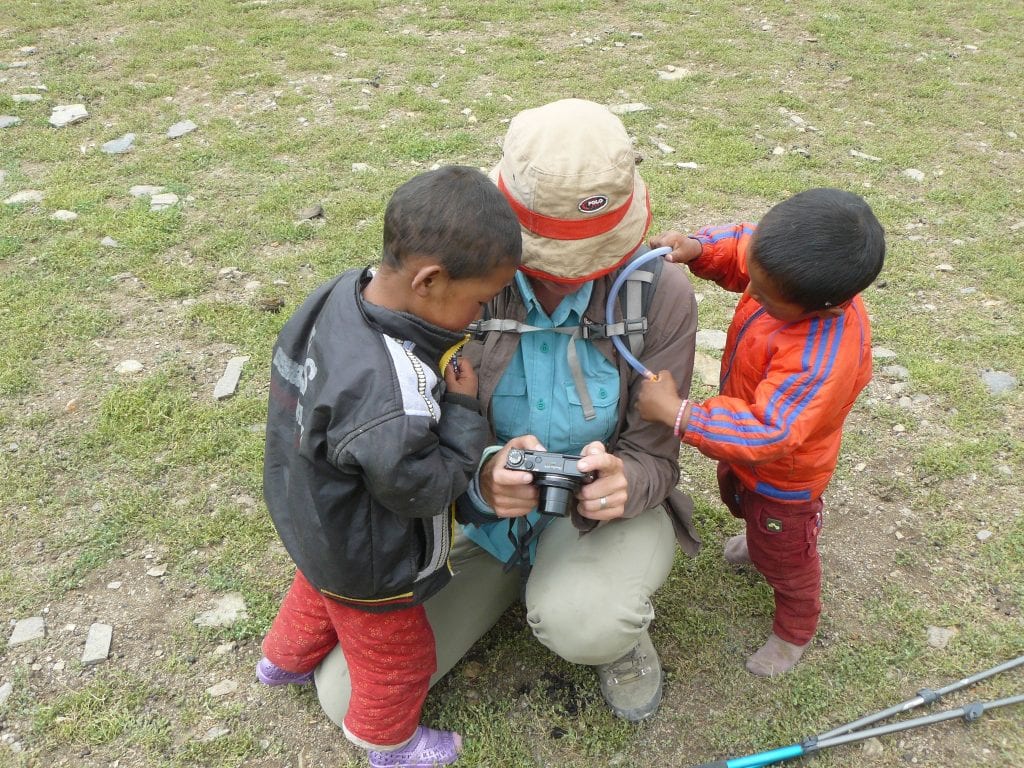
Climb a mountain
If you can, don’t miss out on your chance to climb a Himalayan Peak.
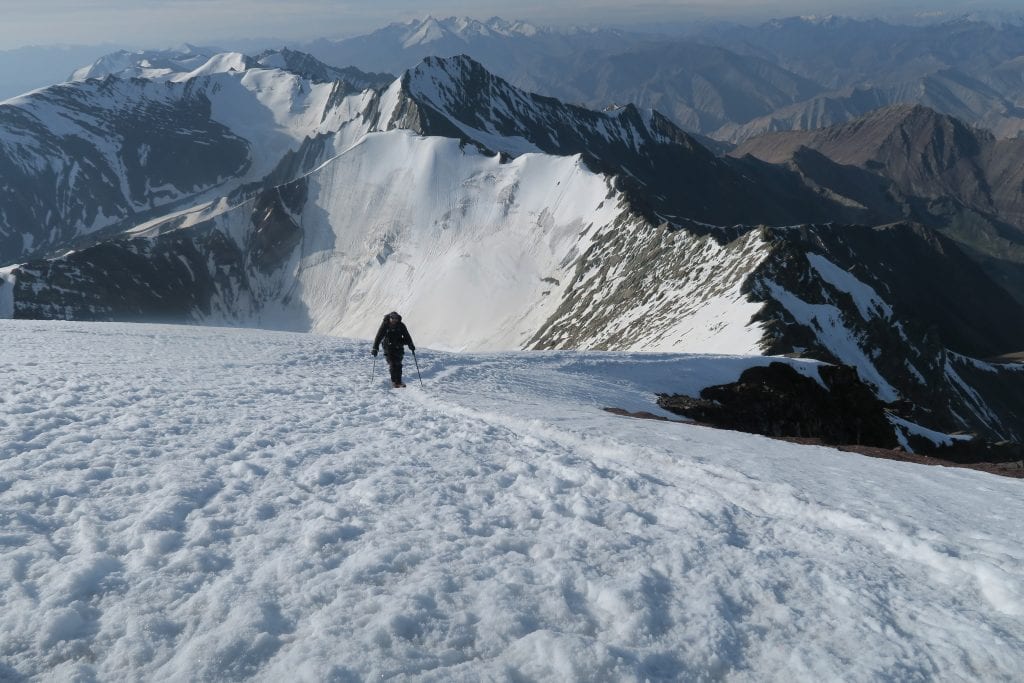
Climb to the roof of Namgyal Tsemo Fort to watch the sunset over Leh.
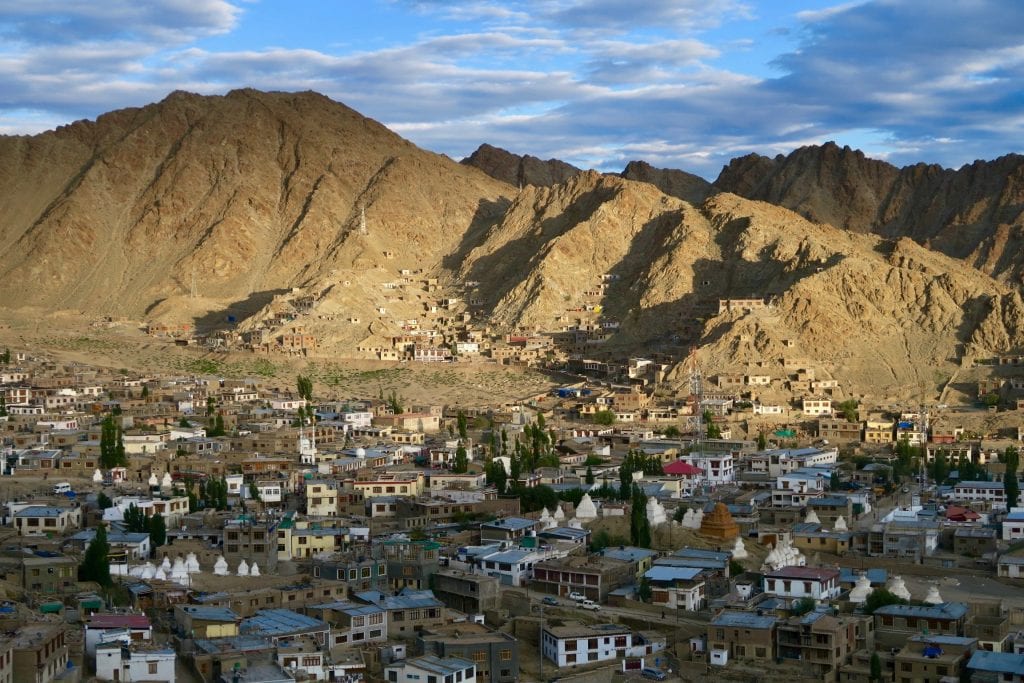
Visit Thiksey Monastery, a short drive from Leh. If you go early in the morning, you can listen to the monks chanting and avoid the crowds. The 15 m statue of Maitrya Buddha is the biggest indoor one in Ladakh. Its intricate details are pretty.
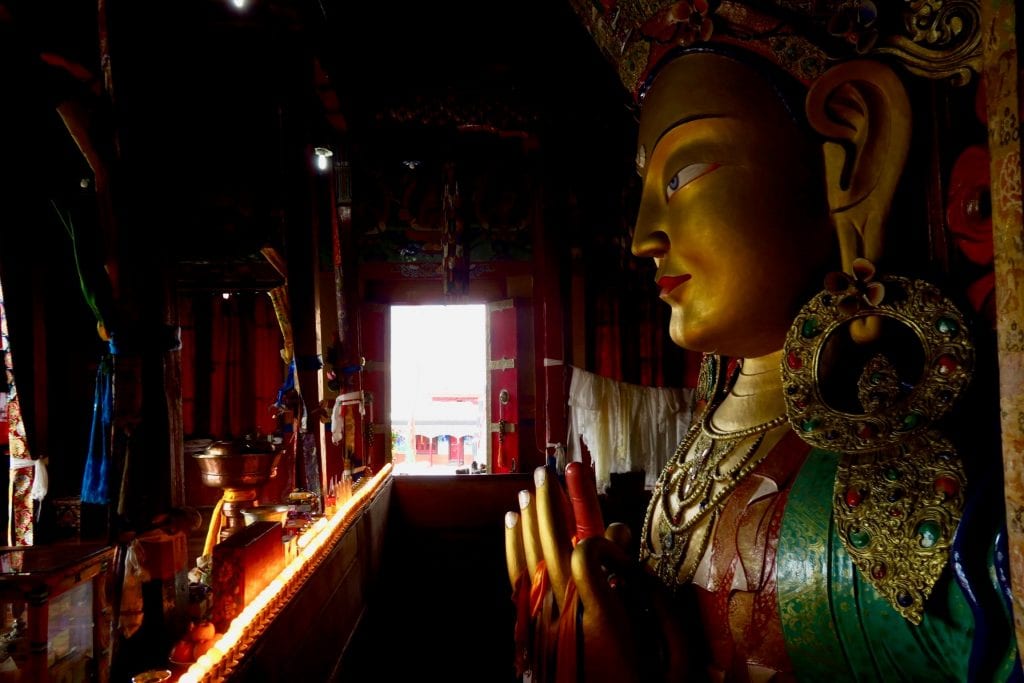
Ride the bactrian (two-humped) camels in Nubra Valley. This ended up being more of a tourist trap than I’d hoped, but it was still completely worth it.
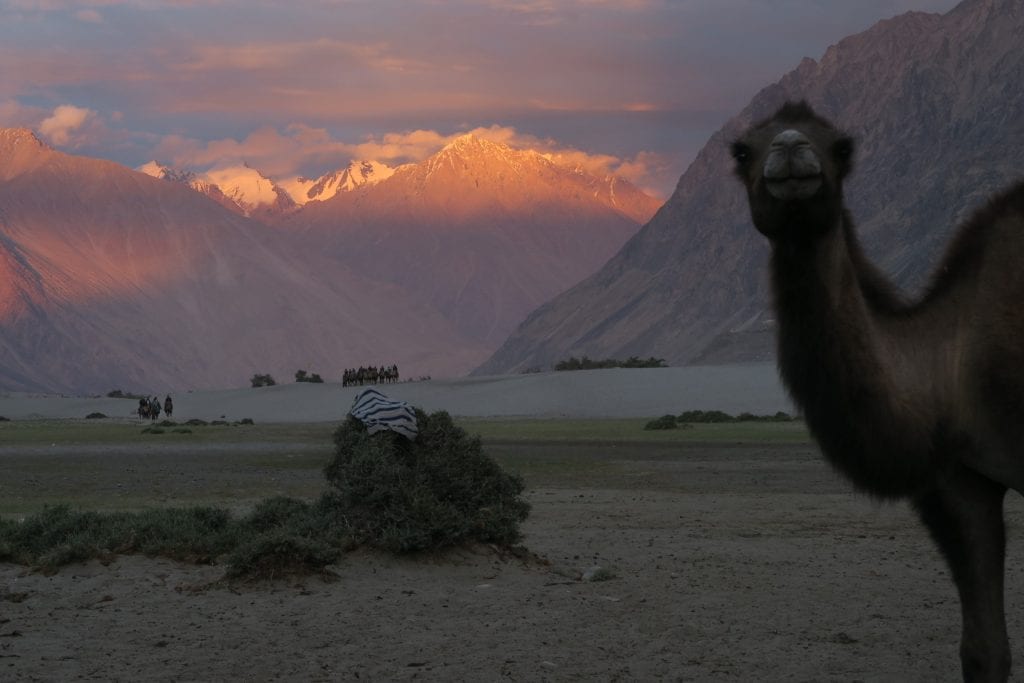
Budget considerations
Ladakh is a good deal more expensive than the rest of India. Expect to pay 30-50% more for food and accommodation than in the rest of India. You can probably get good deals on the shoulder seasons (spring and fall).
Transportation is probably the biggest expense. Public transport isn’t as easy as the rest of India, so most tourists opt for taxis, which are unionized and have fixed rates. This means less stress haggling, but higher fares. Try to make friends at your hotel and share rides or keep your eye out on bulletin boards outside the many, many tour agencies for bulletins of people wanting to share taxis. Expect to pay around $100 -180 USD a day for a taxi and driver. Flights to and from Delhi cost around $100-300 USD.
A fully supported trip with a certified mountaineering guide, ponies, and a cook will cost around $50-100 per person per day, depending on how many people are in your group, your haggling skills, permit fees, and transportation costs. Be wary of price that are too good. You will pay less if you have more people on your trip. Just a mountaineering guide is around $25 a day. Trekking guides cost considerably less. Equipment rentals will cost around $12 a day per item. Trekking peaks over 6000 m require permits, which can range from $50 to $300 or more. Many places in Ladakh require inner line permits, but don’t panic – they are easy to get and cost a few dollars a day.
Facilities/nearby activities
Medical – There is a hospital in Leh. Most larger towns have a small medical centre, and there are roadside medical tents at some villages and army checkpoints.
Transportation– The airport in Leh has scheduled flights to Delhi, Jammu, Chandigarh, Srinigar, and Mumbai. Taxis and public buses are easy to find and both have central stands near town. There are many motorcycle and bicycle rental shops.
Banks/ATMs – There are several banks on the Main Bazaar. The State Bank of India has the most reliable ATMs.
Internet – WiFi is available at most hotels and tourist restaurants. An internet cafe on Main Bazaar has extremely slow computers. Unfortunately, Ladakh experiences frequent region-wide outages.
Phone – Phoning home can be tricky. We needed to call home, and ended up using local’s cell phone because the internet phones were down. Satellite phones are available in some villages for emergencies. Cell service is surprisingly good along the roads, but SIM cards are hard for foreigners to get because of the proximity to the borders.
Tour Operators – There are hundreds of tour operators in Ladakh offering car tours, cycling, motorbike tours/rentals, cultural tours, bird/wildlife watching, meditation and yoga, white-water rafting, climbing, and paint balling (yes, paint balling).
Restaurants – Most tourist restaurants have similar menus with a variety of Ladakhi, Indian, Chinese, Israeli, and Western food. Take a short walk away from the tourist areas for cheap Indian food.
Shopping – Leh is absolutely packed with shops selling pashmina shawls, made from the wool of the adorable pashmina goat of the Changtang Plateau. There are also plenty of handicraft and souvenir stores selling hippie clothes, wool hats, and knickknacks imported from Nepal.
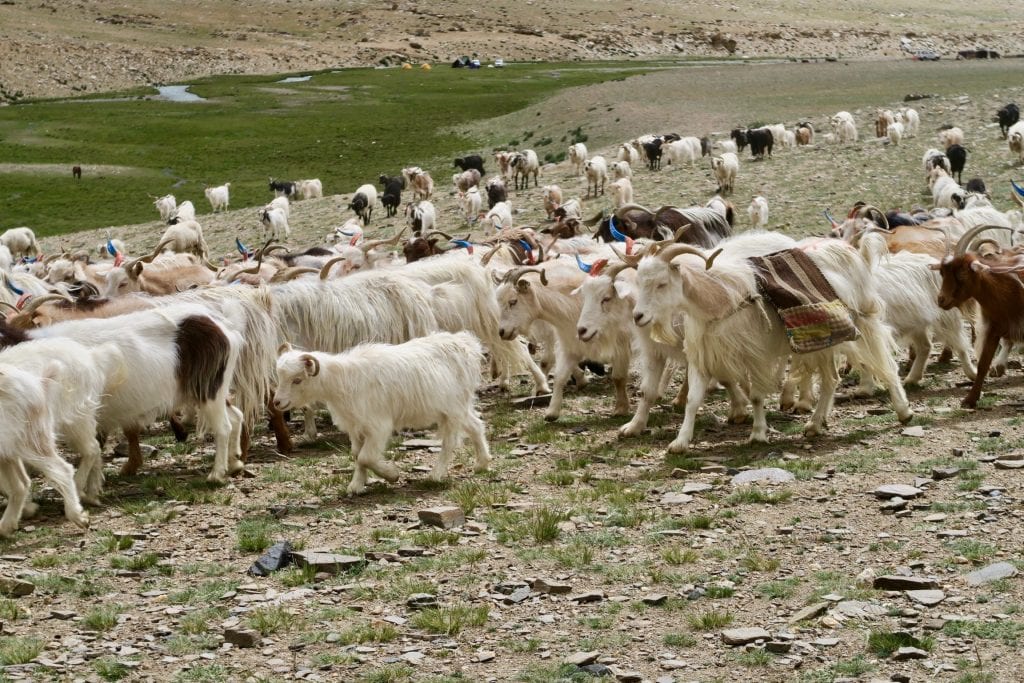
If coming here, don’t forget to bring:
A good first aid kit. There is a hospital in Leh anda few first aid posts in Ladakh, but if you hurt yourself trekking, you are on your own. Make sure you bring antibiotics for stomach problems and consider bringing diamox for altitude, though it’s definitely better to acclimatize naturally.
Good travel insurance. Check the fine print. Most travel insurance companies will exclude mountaineering injuries, and you can bet they’ll count any ascents of Ladhaki peaks as mountaineering. Also check if they will cover mountain evacuation and any other dangerous activities you plan on doing.
If it’s in your budget, a SPOT or DeLorme inReach will give some peace of mind to your family. These devices allow you to send messages and your location via satellite.

A Diva Cup, or a similar menstrual cup. Tampons and sanitary napkins can’t go into the toilets, and really shouldn’t go into the composting toilets on trekking routes. If you can’t stomach the idea of a reusable cup, bring your own tampons (they are hard to find in Ladakh) and put them in a trash bin or burn them.
A hat, sunscreen, sunglasses. Hats drive me nuts, but I learned the hard way and nearly fried my nose off on our first trek. After that, I got a hat.
Reviewer’s rating out of 10
I give it a 9. I loved the mountains, and the unique culture, but after six weeks, I really missed the forests and lush vegetation I’m used to in Canada.
Find Out More
I will be releasing videos about my Ladakh trip throughout the fall and winter on my YouTube channel. https://www.youtube.com/c/TheLastGrownupintheWoods1
Check out these videos of Carley’s trip in and around Ladakh:
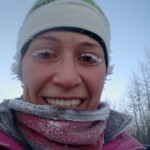
Carley Fairbrother
Carley Fairbrother is the creator and host of the YouTube channel, The Last Grownup in the Woods, geared at getting adults outside and connecting with nature.
After a seven year career as a backcountry park ranger, she returned to school to get her Bachelor of Education and dedicate her life to helping kids get outside.
She loves to travel, but is most at home in the forests and mountains of British Columbia, Canada.
She enjoys hiking, climbing, canoeing, building forts, and eating bugs.



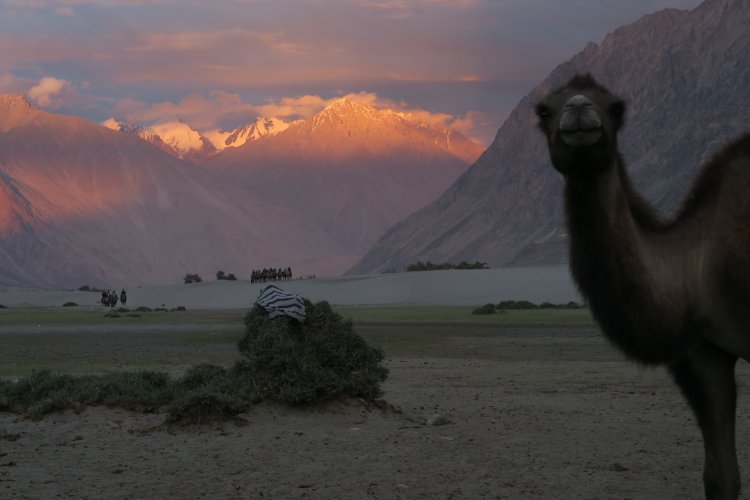










Leave a Reply